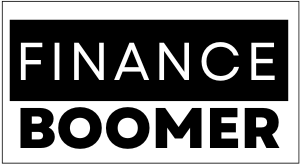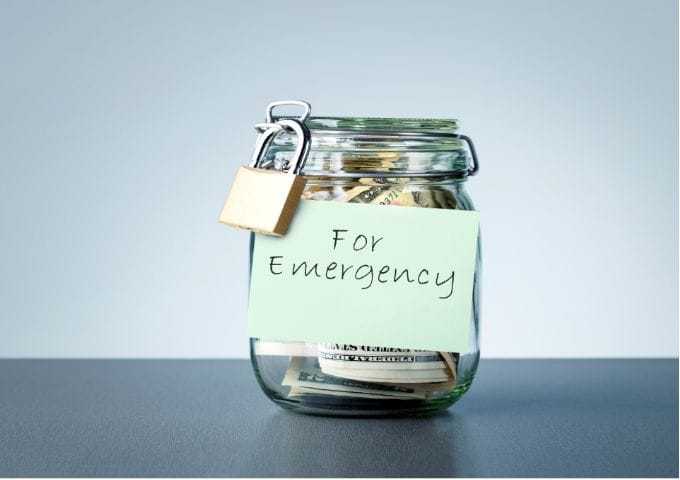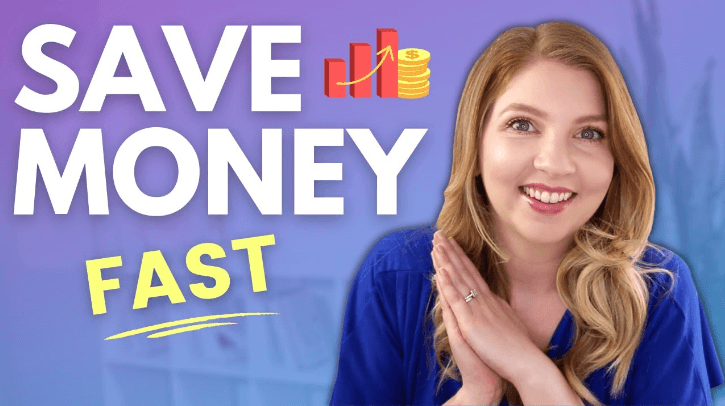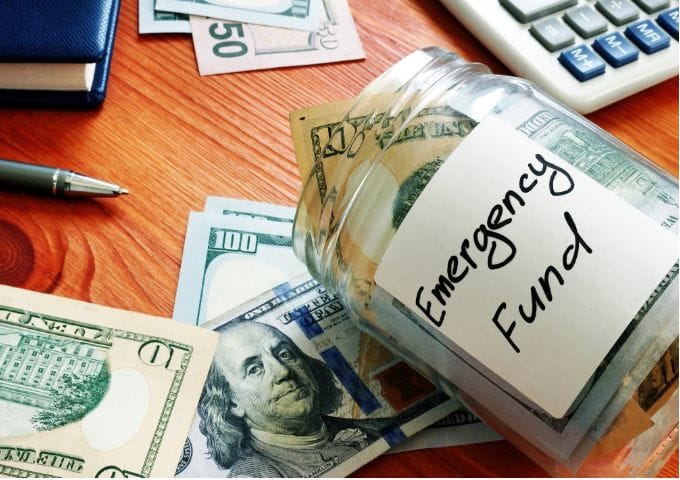Simple Steps to Financial Freedom: 9-5 Escape Plan
Look, I see you. You work hard, you did everything that by society’s standards you thought you were supposed to do, yet you wonder if there’s more to life than just working to pay the bills. A life where work is optional, you are free to pursue your passions, and you’re able to take amazing care of the ones you love. Although schools won’t teach you anything about this, it turns out achieving financial freedom is actually simple. Like anything big in life, if you just take it one step at a time, you can get there. These are the simple steps I took to reach financial freedom in my 30s. Each step builds on the other, and if you miss one step or do things out of order, financial freedom could take you a lot longer than it needs to. So without further ado, let’s start with step zero.
Step 0: Create Your Cash C
That’s right, we have to start at ground level, which is to create what I call your “cash C.” Achieving any financial goal first starts with having money to put toward it. That’s why you need to create a source of income, whether it’s your career, your job, your paycheck, a side hustle, or a business that you start. Bottom line is you need something that brings in enough cash flow to cover not only your subsistence needs, but extra as well. You need to have a surplus to put toward your financial goals and get ahead.
A lot of times, I hear people say things like, “I suck at earning money” or “I’m not good at making money; I’m in a career that doesn’t pay a lot.” This is where you really need to challenge yourself. Earning money, earning lots of it, is a skill like any other skill. This skill can be learned. So, just breaking it down for you: If you want to earn more money, you need to provide more value and then ask to get paid for the value you’re bringing. Those are the two things I really want you to focus on because, like I said, this is step zero. You can’t accomplish anything else until you have some surplus from your cash flow.
If you’re working at a job, find out how you can increase your skills. Volunteer to take on more projects to get more experience, expand your network, and then negotiate hard for your pay every single year, if not every quarter. You need to sit down with your manager, show them the value you’ve brought to the company, and keep asking for more pay to compensate you. If you’re not bringing value to the company and don’t feel like you deserve to ask for a raise, get yourself to a position where you can ask for a raise—where you feel absolutely entitled to a raise. If you just bring value, become someone of value, then the money is going to come. That’s how it works.
So, that’s if you’re working at a company. If you want to go the entrepreneurship route, you’ve got to also create your cash cow. Pick the right business model—choose a business model such as online businesses that are scalable, e-commerce, digital products that have really high profit margins. Don’t get into a business such as brick-and-mortar where it’s hard to maintain large profit margins and difficult to scale. You’ve got to create something that’s going to be your cash cow. Bottom line is, whatever your cash cow is, you need one. So, that’s step zero.
Step 1: Build a Starter Emergency Fund
Now, let’s talk about step one. Once you’ve got some surplus money to actually do something with, the first place to route some of that extra cash is toward building a starter emergency fund. We can’t talk about financial freedom until we first have financial stability and security, and that starts by having a cash cushion that gets you out of the living paycheck-to-paycheck cycle.
You want to start having money in your bank account that doesn’t move. It’s the concept of aging your money. If, as soon as money comes in, it has to go right back out the door toward expenses, then your money isn’t aging in your bank account for very long. Whereas, if you have money sitting in there and you have so much extra, now you’re starting to create more of a financial cushion.
This doesn’t happen by accident. You really need to make it a goal. So, I want you to set a goal to first save up just $2,000. Have $2,000 sitting in your account that you never need to touch. Better yet, I recommend opening a high-yield savings account that is separate from your everyday checking account because these accounts pay high interest, and if it’s not attached to your everyday spending account, you’re less likely to be tempted to dip into it.
The reason I say start with $2,000 is because that’s more than enough to cover the average emergency expense, which data shows is around $1,400. Whether it’s an emergency vet visit for your cat, an emergency car repair, or any other unexpected expense, this $2,000 cash cushion will be enough to cover you. You can pay for it in cash, no stress, and not have to get into credit card debt for it.
Since every step builds on the other, the benefit of starting with this step is that it starts building your muscle of saving. It really is a muscle, and since $2,000 is not a large amount to save, you can get there relatively quickly, get a quick win, and you’re going to feel so accomplished and good about yourself that you’re going to be super motivated to tackle the rest of the steps to financial freedom.
Step 2: Master Credit Cards
That brings me to the next step, which is to master credit cards. According to a Bankrate survey, over 50% of Americans are carrying credit card debt, and the total credit card debt carried by Americans collectively is over $1 trillion. That’s the GDP of a small country. So obviously, credit card debt is a huge obstacle to financial freedom.
Before you move any further, you want to create a really good relationship with credit cards. Straight up, I love my credit cards. I love using them. I don’t think it’s necessary to completely cut credit cards from your life and never use them. I think, if used wisely, they are actually a great tool for financial freedom, where you can get a lot of free flights and free things. But you’ve got to learn how to beat credit card companies at their own game and not let them get the better of you.
When you spend on a credit card, it might seem really convenient to just make the minimum payments, but the amount of interest you pay is going to be multiples more than the dollar amount you originally put on your credit card. Credit card companies don’t want you to know this. They want you to just enjoy the convenience and keep making them tons of money. But check this out: Let’s say you bought something for $1,000 on your credit card.
If you just make the minimum payments with a 25% APR, not only is it going to take you more than 10 years to pay off that balance, but you’re going to also have paid over $1,400 in interest over that period. That’s on a $1,000 original purchase. The numbers get even worse the more you spend. On a $10,000 credit card balance, not only will it take you 28 years to pay that off if you only do minimum payments, but you will have paid over $14,000 in interest in that entire period. You can quickly see why, if you don’t master credit cards, financial freedom is never going to happen for you.
Here’s my advice if you need some help digging out of this credit card cycle: First, stop using credit cards temporarily until you get a handle on it. It’s best to just freeze that credit card in a block of ice or even cut it up and order a new one later. The first step is to stop digging a deeper hole. Then, strategize and think about how you can hustle up extra money and really focus on paying that balance down. It’s incredible how much you can accomplish if you just focus on one thing.
If you make it a top priority to pay off that credit card and ask yourself every night before bed, “What are ways I could come up with extra money to pay off this credit card?” I guarantee you, you will see your balance go down quickly. Then, do a sprint. Just for like 30 days, you can do anything if it’s temporary. Cut out all discretionary expenses and put all of your money toward paying off that credit card. By the end of this sprint, your credit card balance will have gone down quickly, and you’re going to be so motivated to do another one. It’s all about focusing and keeping up your motivation.
Step 3: Build a Full Emergency Fund
Alright, moving right along to step three, which is to build up a full emergency fund. This is when you officially have what I like to call “you money.” Just imagine this: Let’s say you’re working at a job, and the environment is really toxic, but you can’t leave because you need money next month for rent. But then, what if you had 3 to 6 months’ worth of living expenses in a high-yield savings account that not only paid you interest every month so it was growing money on its own, but was just set aside because you don’t need to touch it? If you ever needed the money, it would be there for you, giving you the freedom to say goodbye to that toxic job, quit, and give yourself a month or two of runway to find a new job or take a mental health break because you’ve got money in the bank.
That’s what having a full emergency fund is all about. With your emergency fund in place, you’re not as reliant on your paycheck every month anymore, which gets you that much closer to making work optional. Having an emergency fund is really the foundation of financial freedom, and it also buys you peace of mind. You’ll never have to worry again about an unexpected car repair or what would happen if you lost your job because you’ve got money just sitting there to cover any financial storms.
Step 4: Max Out a Roth IRA
Now we’re moving into the exciting part, which is building wealth. Once you’ve got financial stability, the next goal is to build wealth by investing it. But where do you start? There are so many options out there. I suggest starting with a Roth IRA, which is the best retirement account out there, in my opinion. A Roth IRA allows you to invest for your future, tax-free, which is a huge deal when it comes to retirement planning. With this account, you’re contributing money that you’ve already paid taxes on, but then the money you put into your Roth IRA grows tax-free for the rest of your life. Best part? You won’t have to pay any taxes on your Roth IRA when you withdraw it, even when it grows to multiple six or seven figures.
To break it down for you: First, open a Roth IRA account with an online brokerage. I recommend using one like Fidelity or Vanguard, which offer low-cost index funds that you can use to invest in. Second, max out your Roth IRA every year. You can contribute up to $6,500 per year if you’re under 50 years old or $7,500 if you’re over 50. I recommend just setting up an automatic monthly transfer from your checking account to your Roth IRA for whatever the equivalent is. If you’re under 50, just divide $6,500 by 12 months and set up an automatic transfer of $541 per month.
Step 5: Invest in a Taxable Brokerage Account
After you’ve maxed out your Roth IRA for the year, the next step is to open a regular taxable brokerage account and start investing in that. The difference between a taxable brokerage account and a Roth IRA is that, with the brokerage account, there are no contribution limits, and you can invest as much money as you want every year. However, the downside is that the profits you make on your investments in a taxable account are subject to taxes when you sell your investments for a profit, but I still recommend this account because, unlike retirement accounts, the money you invest in a brokerage account isn’t locked up until age 59 ½. You can access it at any time, making it more flexible.
The best way to invest in both a Roth IRA and a brokerage account is through index funds. These are funds that hold hundreds or even thousands of stocks within them, giving you instant diversification and less risk. They are also low-cost and historically give you better returns than individual stock picking.
Step 6: Make Work Optional by Building Passive Income
The final step on the path to financial freedom is to build passive income streams. Passive income is income that comes in every month with little to no ongoing effort from you. The goal here is to build enough passive income so that it covers all your living expenses, making work optional. The best sources of passive income are from investments, such as dividends from index funds, interest from high-yield savings accounts, or rental income from real estate. Other sources could be royalties from a book, online courses you create once but sell on autopilot, or an online business that’s mostly automated.
Once your passive income exceeds your monthly expenses, congrats, you’re financially free! You no longer have to trade time for money, and you can spend your days doing whatever you love.









